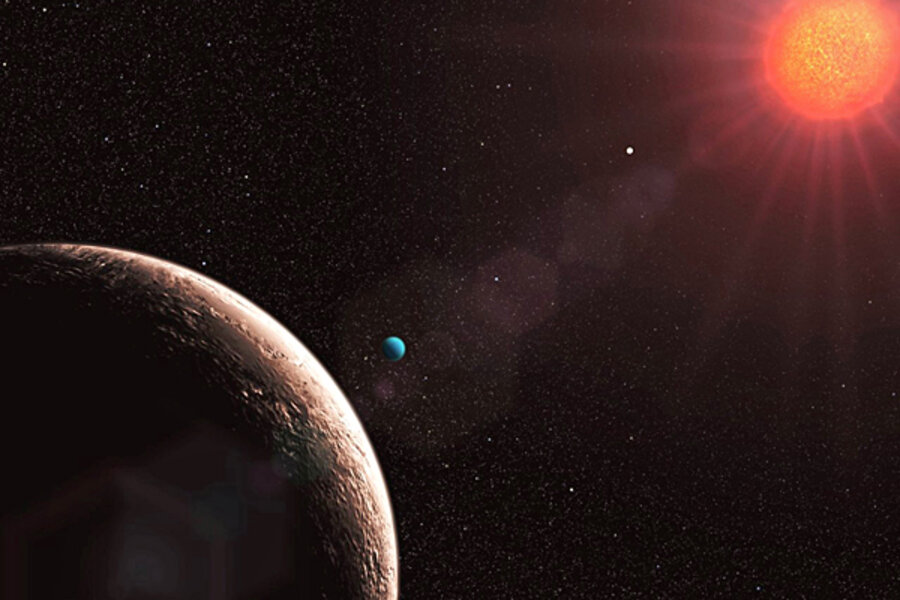List of planets spotted outside our solar system now tops 500
It was only a little over a year ago that the 400th extrasolar planet was confirmed, but time flies when you’re discovering exoplanets. The 19th of November 2010 marked the date that over 500 exoplanets had been confirmed on The Extrasolar Planets Encyclopedia.
Though it’s an arbitrary number to celebrate, the fact that we’ve confirmed the existence over 500 exoplanets since their initial discovery 20 years ago is deserving of merriment. Discovery of exoplanets has really ramped up over the last few years, thanks in part to the ESA’s COROTsatellite, the Hubble and Spitzer space telescopes, the Keck Interferometer, and the improvement of observational techniques to discover and confirm exoplanets. NASA’s Kepler spacecraft has over 700 candidates for exoplanets. Only 7 planets have been confirmed after being discovered by the Kepler spacecraft so far, though.
Jean Schneider, an astrobiologist at the Paris-Meudon Observatory, keeps up a database of the confirmed exoplanetary discoveries at The Extrasolar Planets Encyclopedia. He posted a warning about how muddle the declaration of “the discovery of the 500th exoplanet” could be. He wrote in the warning:
“The number of exoplanets, recored for instance at http://exoplanet.eu is necessarily subject to some uncertainty for several reasons:
- the mass limit below which a substellar object is called a planet is somewhat arbitrary
- the mass measurement is always affected by some instrumental inaccuracy
- whatever this mass limit is, the true mass for most planets is subject to some uncertainty, intrinsic to the detection method (unkown inclination of the orbit, modelisation of planet atmosphere)
- some planet detections, even published in refereed papers, are sometimes retracted afterwards
For all these reasons
1/ The boundary between “confirmed”/”unconfirmed” planets is somewhat fuzzy
2/ The number of planet candidates at http://exoplanet.eu ;(collected in the survey of professional litterature, conferences or websites) is affected by an uncertainty of a few units.”
In essence, to say that there is a “500th exoplanet” is really not possible, given that there needs to be confirmation of the planet. Even after that confirmation, there could be the possible retraction of the planet from the database. 5 confirmations were posted on the 19th, all of them published in refereed papers and discovered in 2010. This kicked the total over 500. But then another was announced the next day, and it was discovered in 2007 but only recently confirmed. So, putting a number on the 500th extrasolar planet to be confirmed is pretty much impossible, arbitrary at best.
Schneider was interviewed by Scientific American on just why he is the keeper of the encyclopedia, and some of his thoughts on the discoveries made so far and the future of the field. The text of the interview is available here.
Complicating matters even further, there is another running tally of extrasolar planets maintained by the NASA’s Jet Propulsion Laboratory at PlanetQuest. Their count on the 22nd of November was only 497, and today rests at 500. The Extrasolar Planets Encyclopedia now stands at 504.
PlanetQuest has this video that succinctly describes the history of extrasolar planet discovery, for those interested:
Even if it’s arbitrary, you can still have that “500th exoplanet” party if you’d like, complete with Kepler satellite-shaped hats. Nobody will likely stop you; if they do, there will likely be another few dozen planets discovered – or a few retracted – by then anyways, making their point rather moot.
Source: MSNBC, PlanetQuest and The Extrasolar Planets Encyclopedia
Nicholos Wethington blogs at Universe Today.
View all Universe Today posts on the Monitor.
Add/view comments on this post.
Related stories





